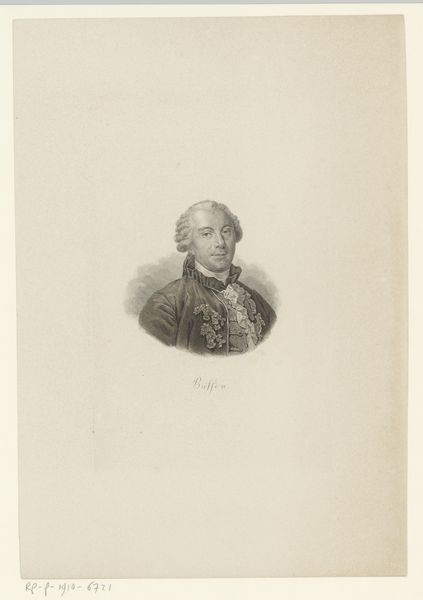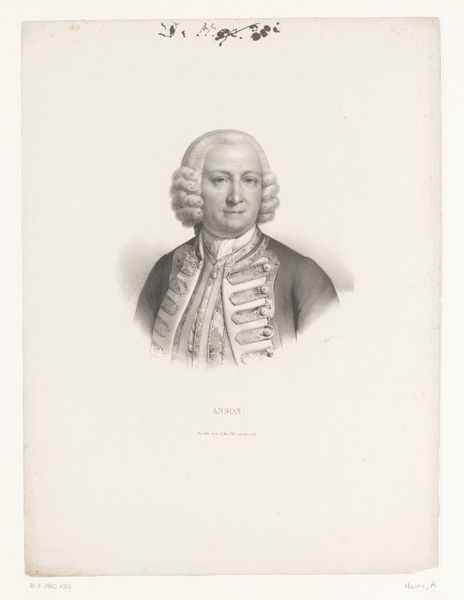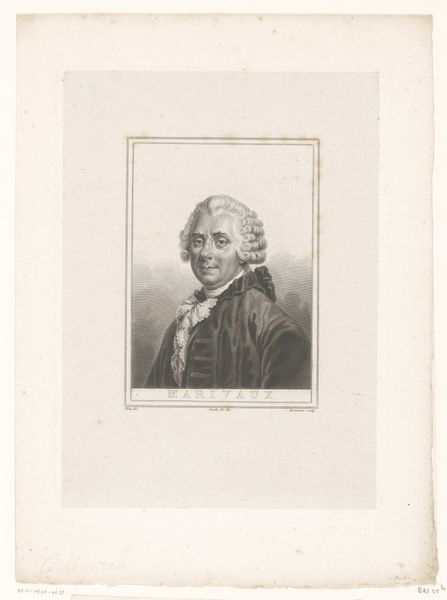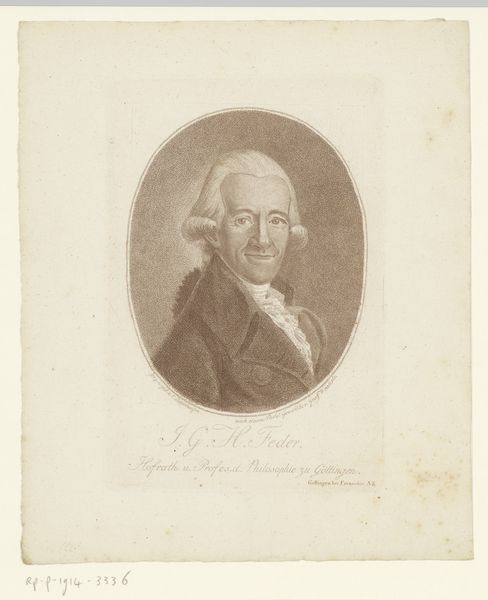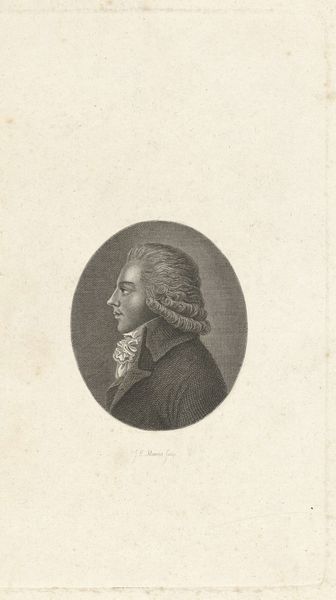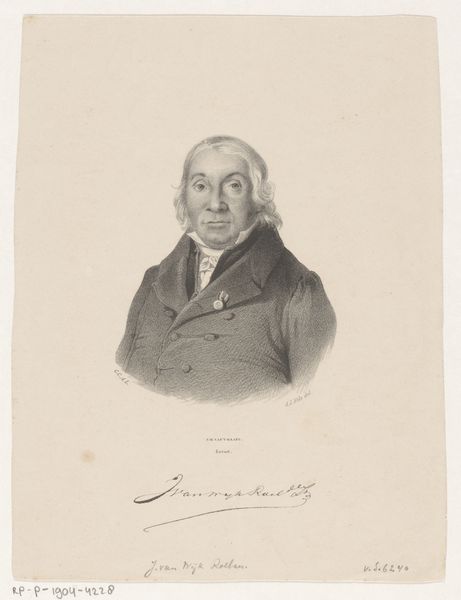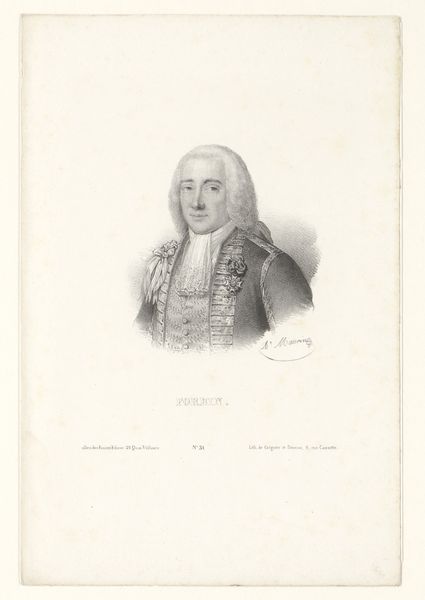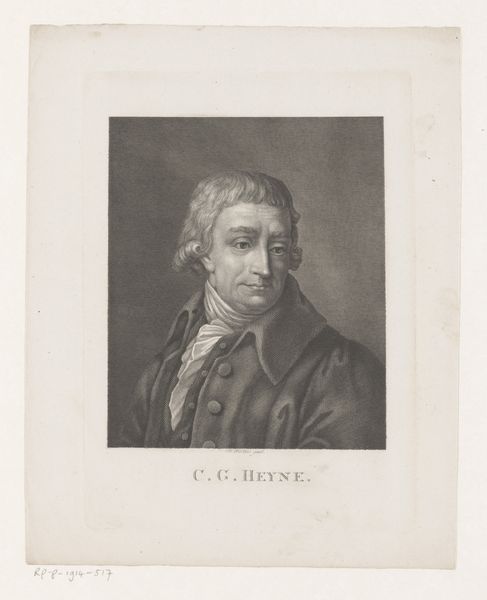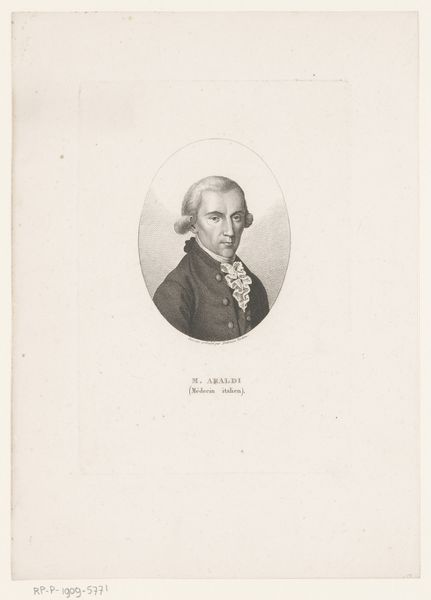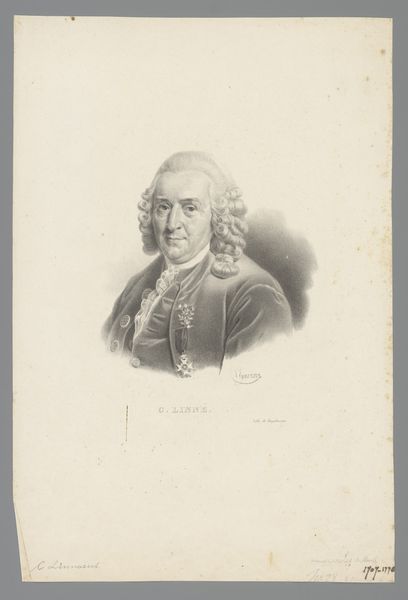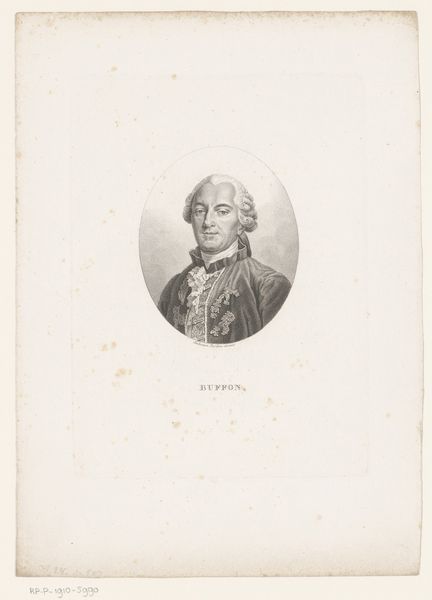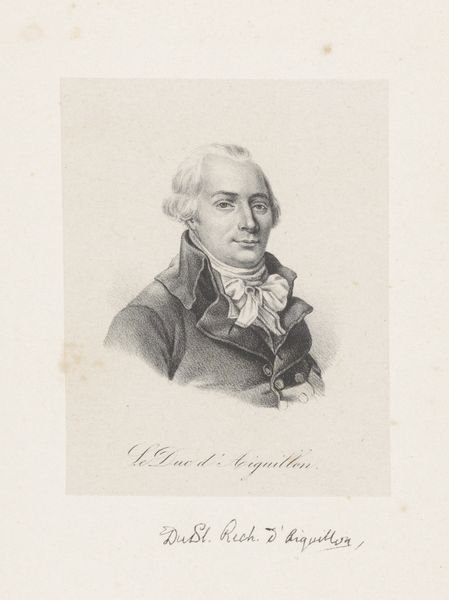
drawing, engraving
#
portrait
#
pencil drawn
#
drawing
#
neoclacissism
#
light pencil work
#
pencil sketch
#
old engraving style
#
pencil drawing
#
academic-art
#
engraving
Dimensions: height 244 mm, width 152 mm
Copyright: Rijks Museum: Open Domain
Curator: This is a portrait of André Jacob Roubo, crafted by François Jacques Dequevauviller sometime between 1793 and 1848. It appears to be a drawing or an engraving, judging by the delicate linework. What's your initial take on it? Editor: My first impression is one of restrained power. There's a certain seriousness in his gaze, almost a melancholy, but also an undeniable sense of authority conveyed by his posture and attire. I can feel the weight of history just looking at it. Curator: Indeed. The piece resonates with the Neoclassical aesthetic, a movement that deliberately drew inspiration from the art and culture of classical antiquity, mainly ancient Greece and Rome. Notice the clear lines and the focus on portraying Roubo with a sense of noble composure. Academic art alludes to this as well. It’s very much in line with the artistic conventions and prevailing social attitudes towards representation. Editor: Absolutely. The choice of medium also speaks volumes. The relative austerity of a drawing or engraving compared to painting underscores a commitment to truth and reason, qualities prized during that period. But the whiteness of the page creates a space of absence to ponder Roubo and reflect on class and social status in a pre-revolutionary context. Curator: Good point. Roubo was, of course, a master cabinetmaker and author of a highly influential treatise on woodworking. He wasn't of the aristocracy but held a position of respect within his profession and in the world of arts and crafts. The choice to depict him in a style typically reserved for nobility subtly elevates his status. What does the gaze evoke to you? Editor: His gaze feels…knowing, doesn’t it? Perhaps he is confronting a world on the brink of massive upheaval, but he certainly projects steadfastness amidst that turmoil. The portrait serves as a social commentary about the meritocracy as well. I'm really considering his place in French history. It gives us a view of someone deeply embedded in his profession. Curator: Yes, an insightful observation. Considering the timeframe, with the French Revolution looming, it invites reflection on the social order of the day and the rising prominence of skilled tradespeople in shaping French society. His work contributed to the material culture that helped define and fuel aristocratic lifestyle but the portrait allows space to imagine how society was beginning to reconsider that social stratification. Editor: Definitely. His expertise and skill had power during the rise of industrial society, offering different understandings of artistry beyond simple displays of affluence or allegiance. Thank you, this opened my mind further. Curator: The pleasure was all mine! A closer inspection like this can enrich our understanding of these historical figures through more critical lens.
Comments
No comments
Be the first to comment and join the conversation on the ultimate creative platform.
